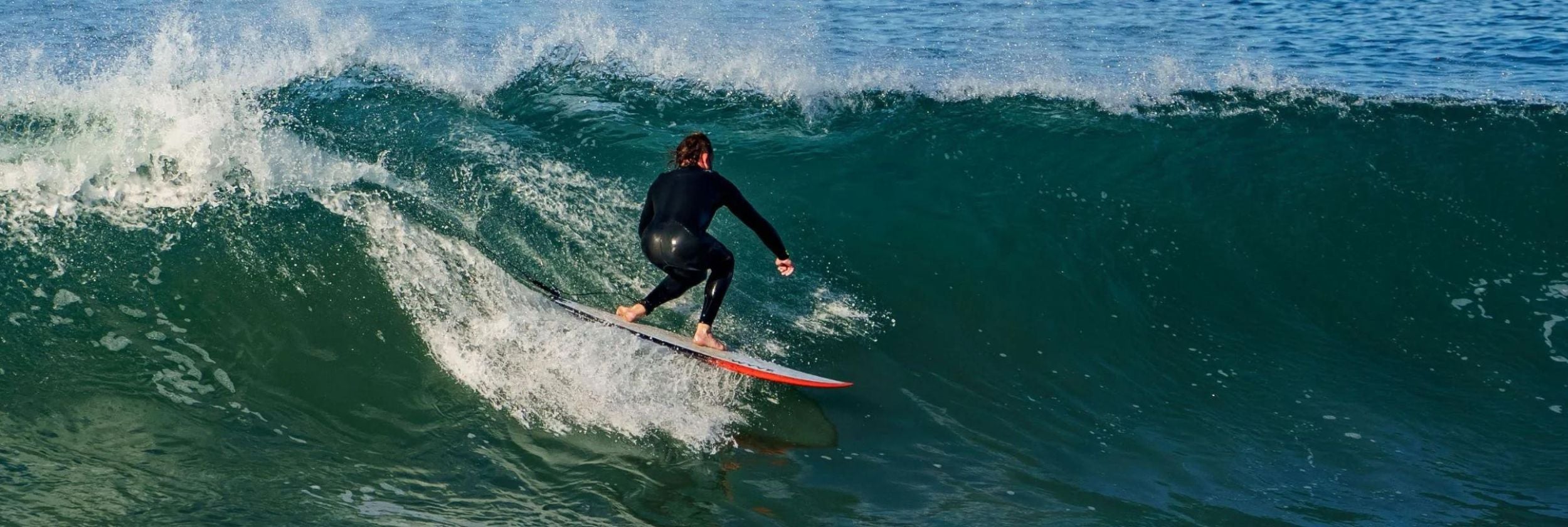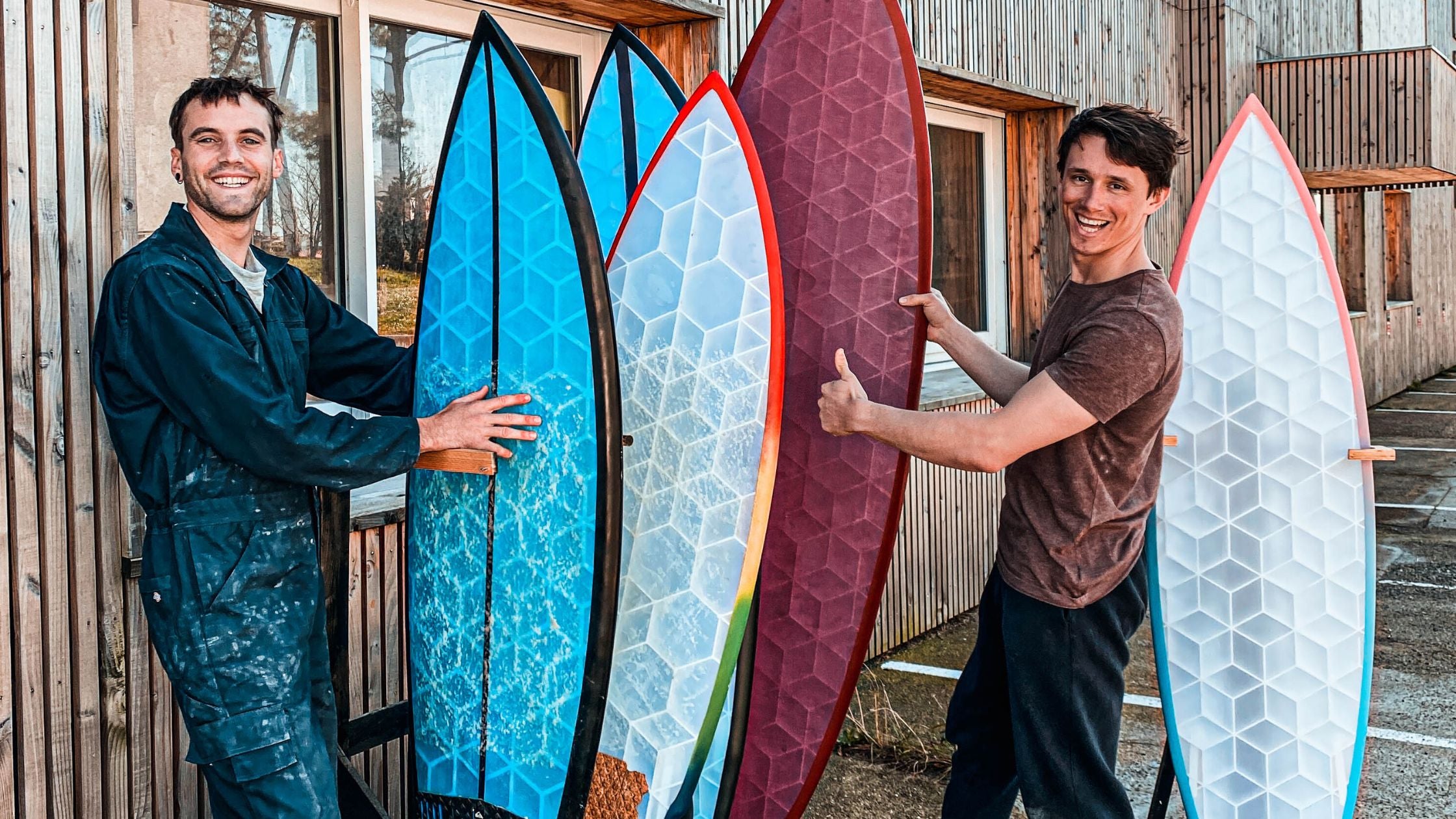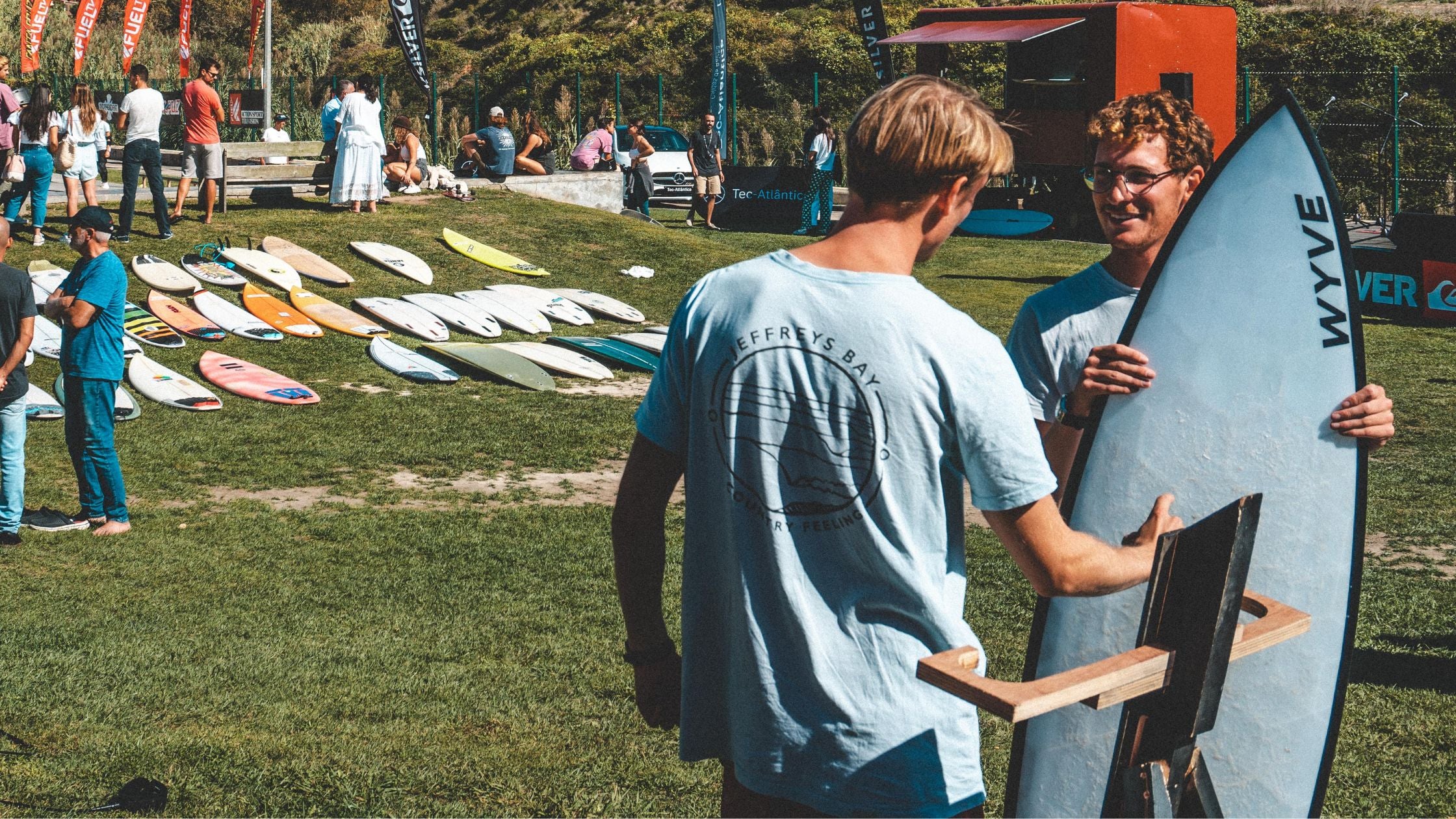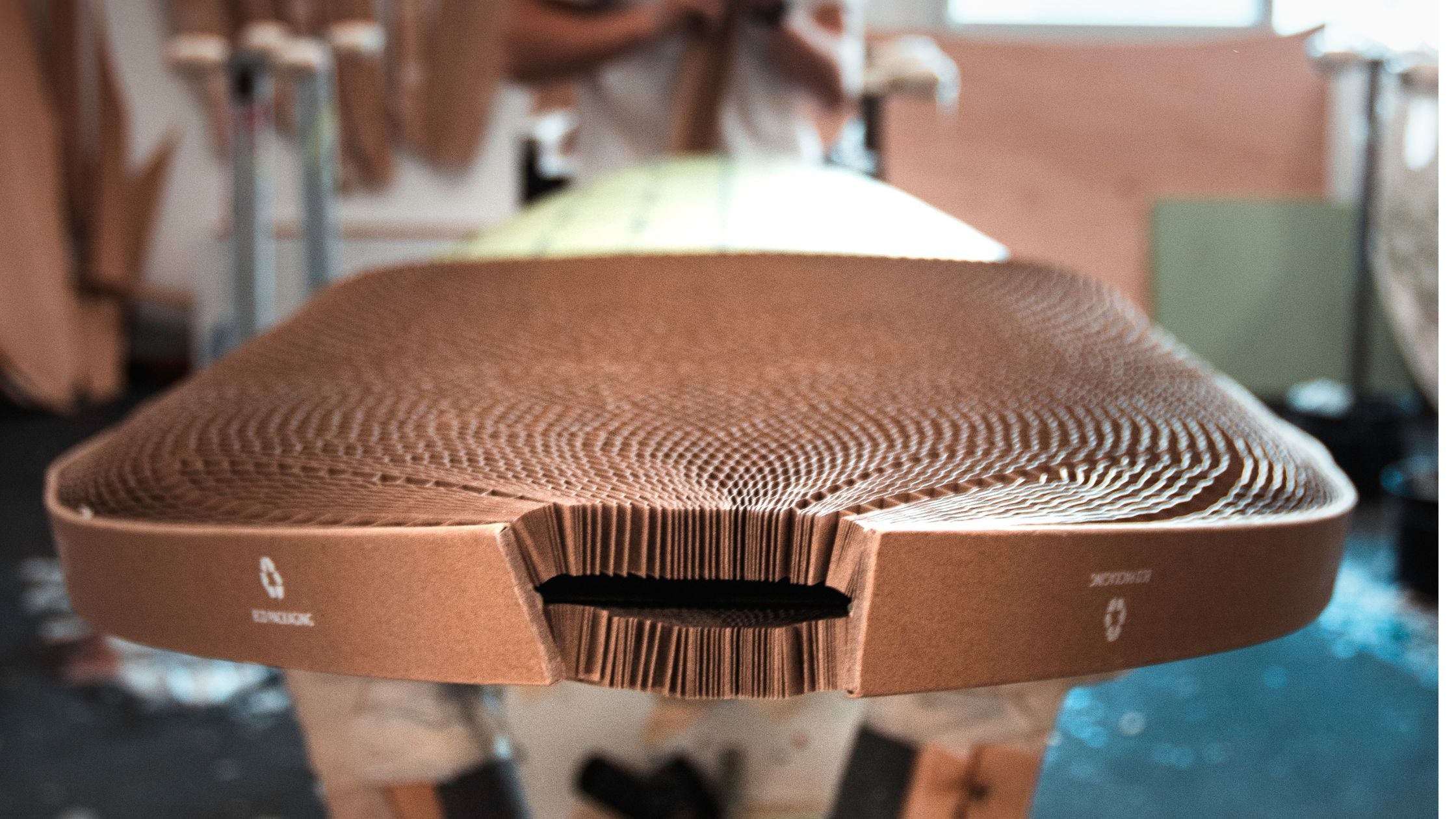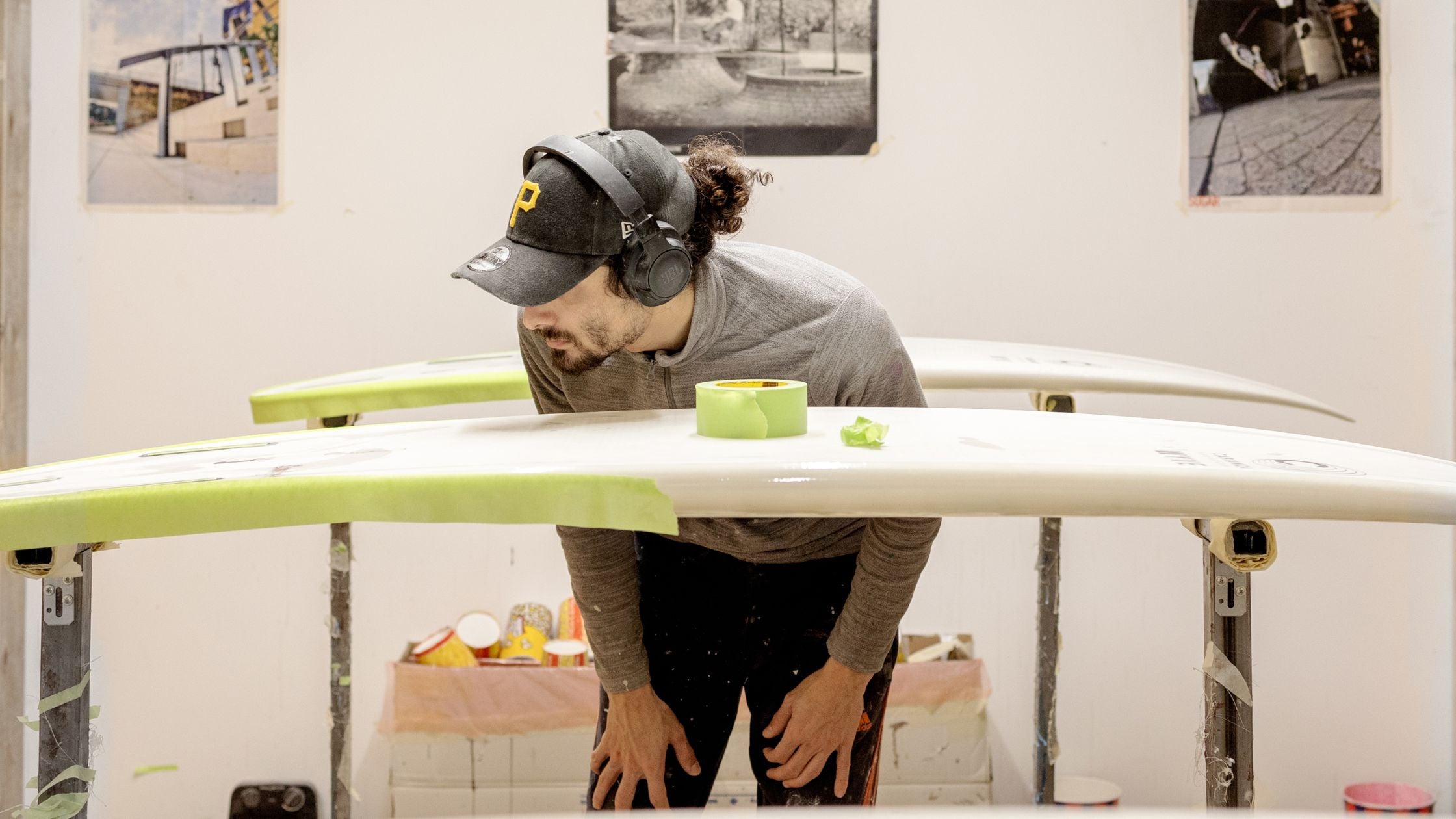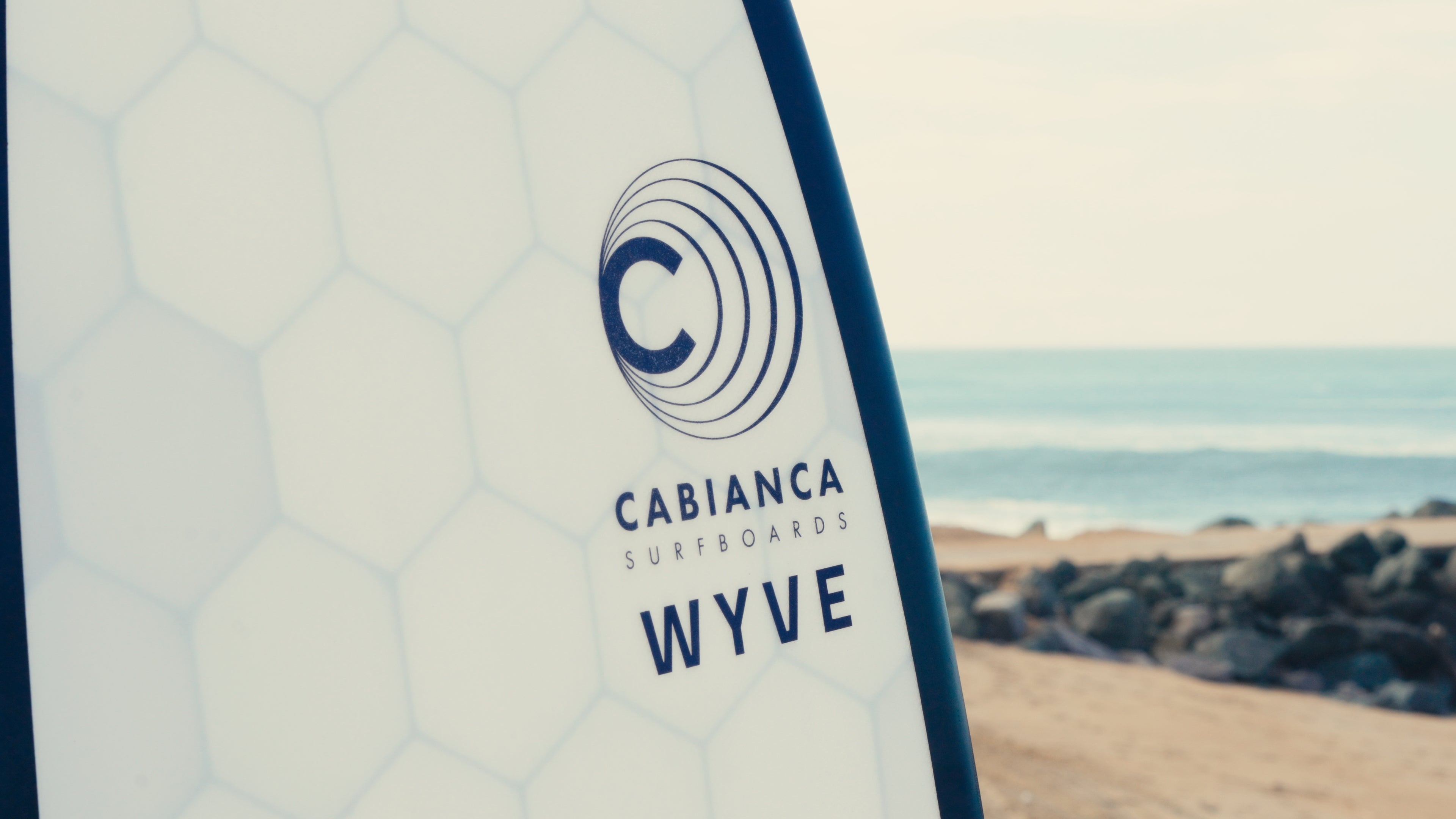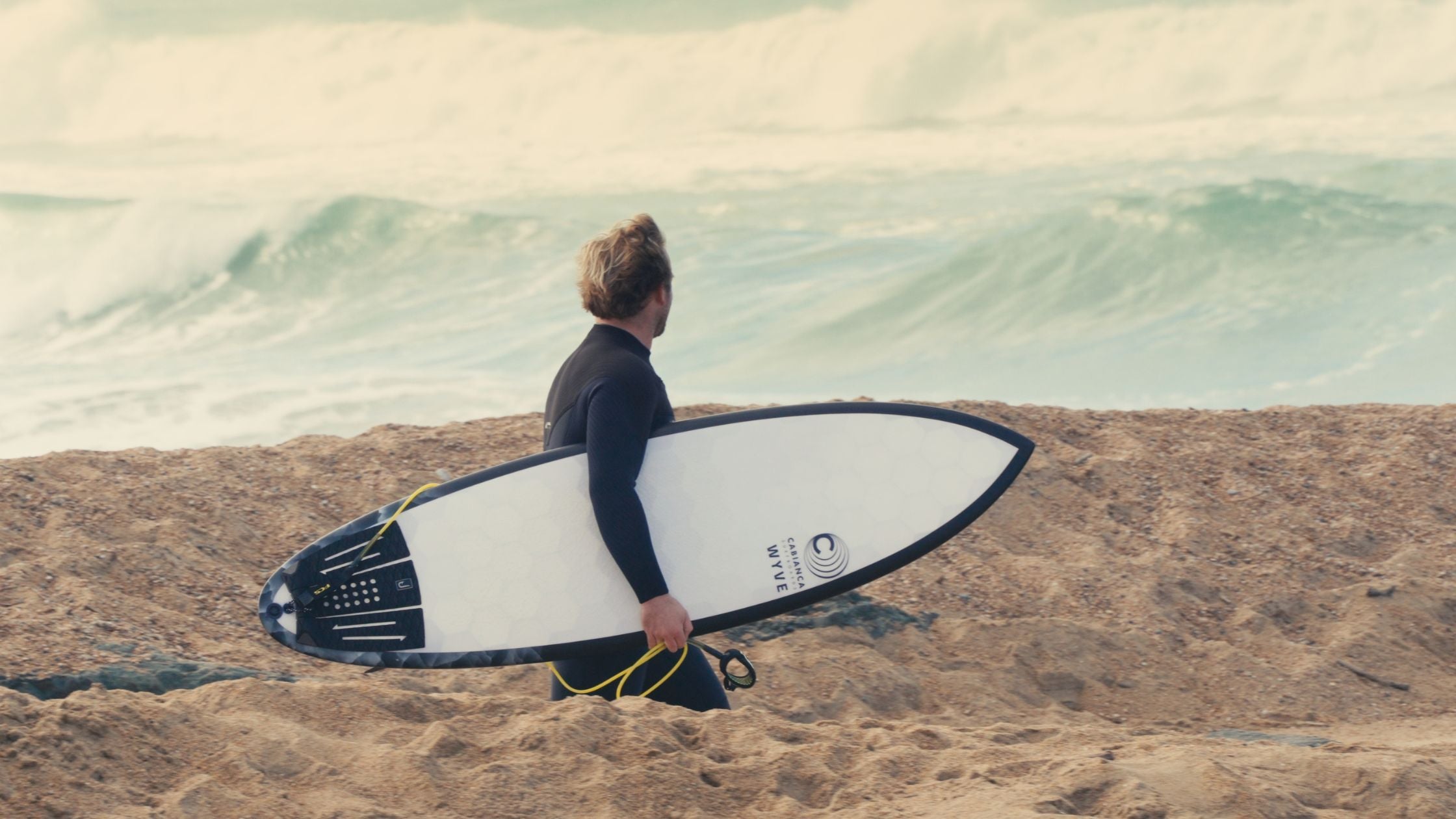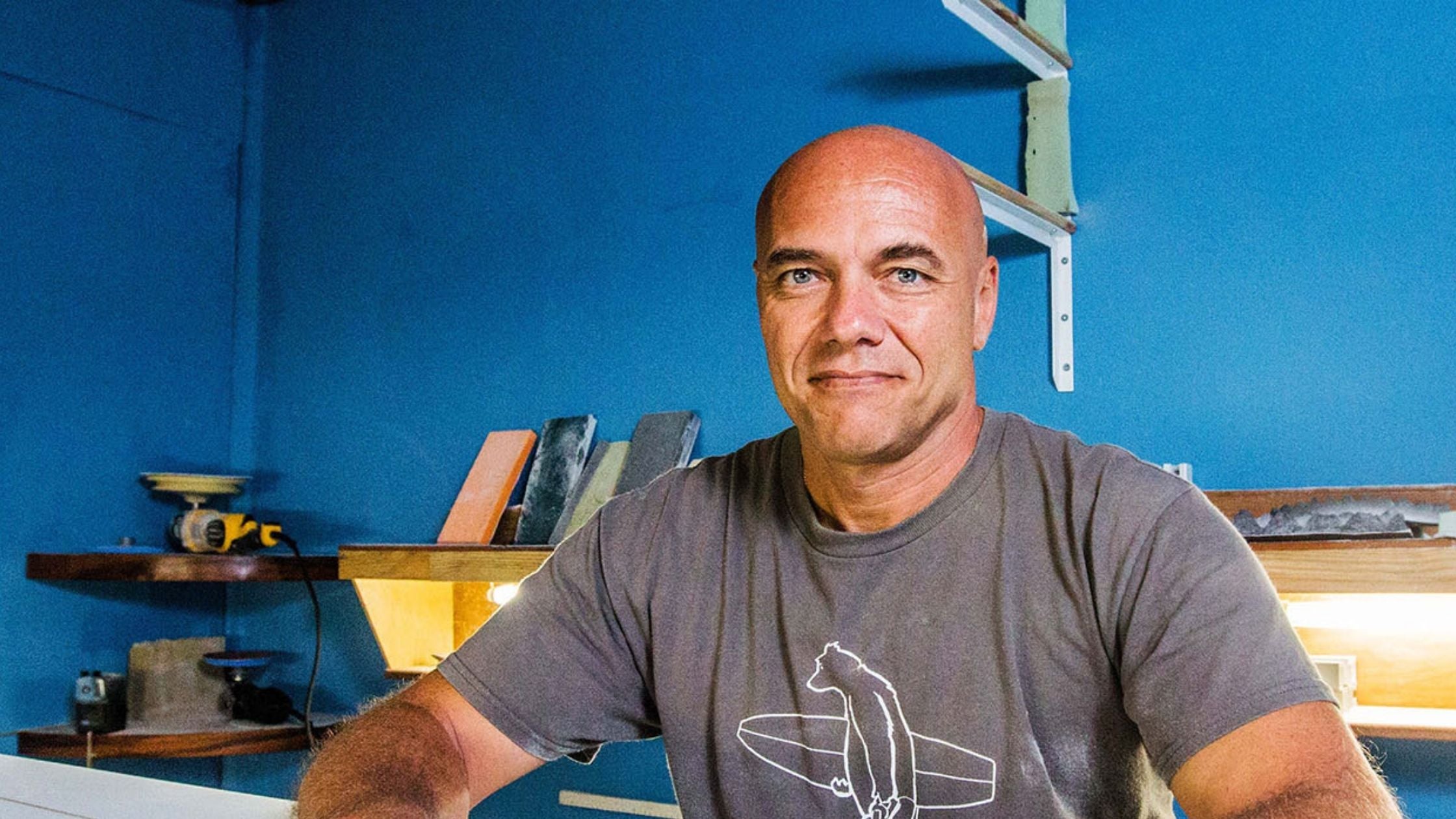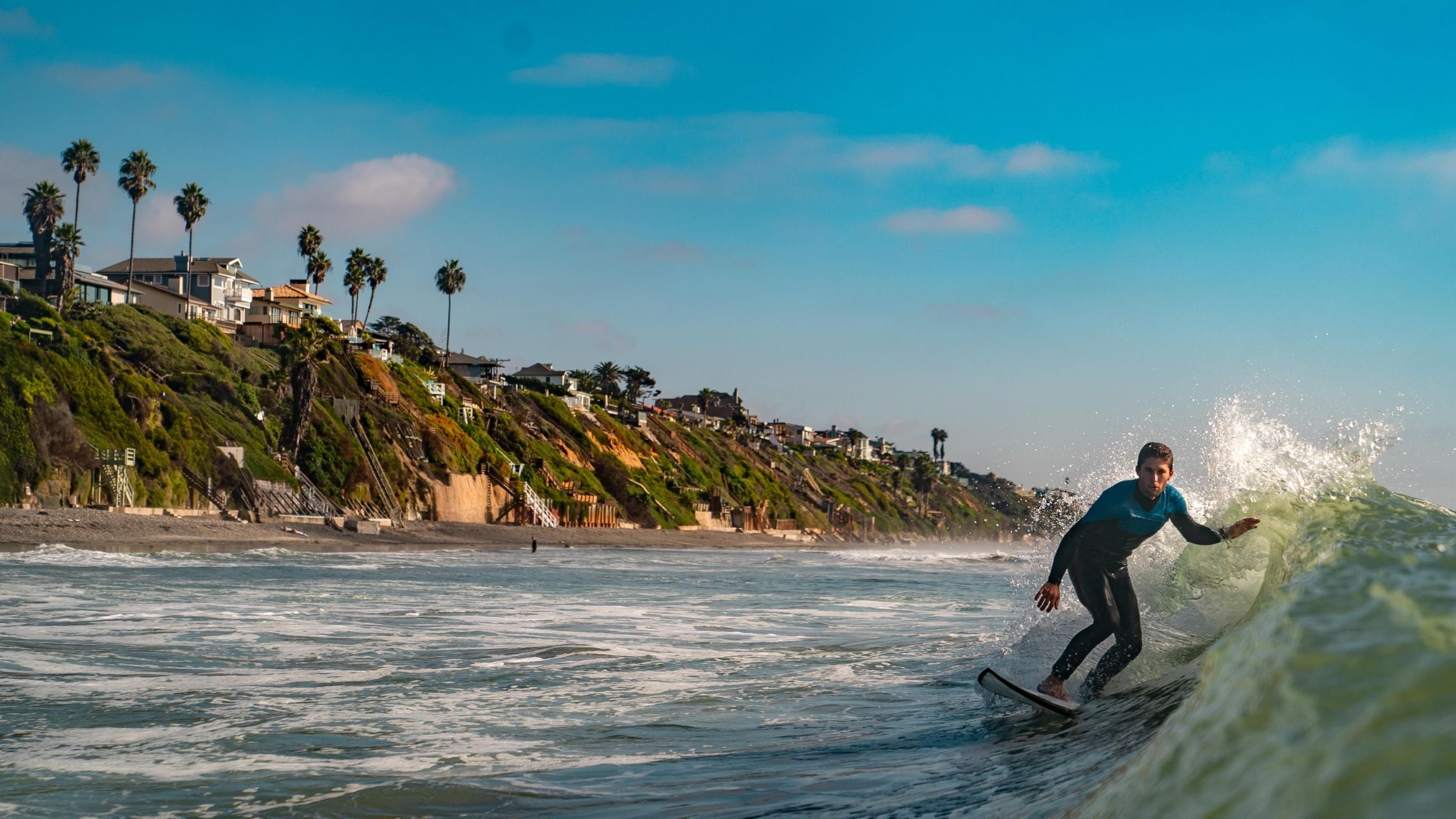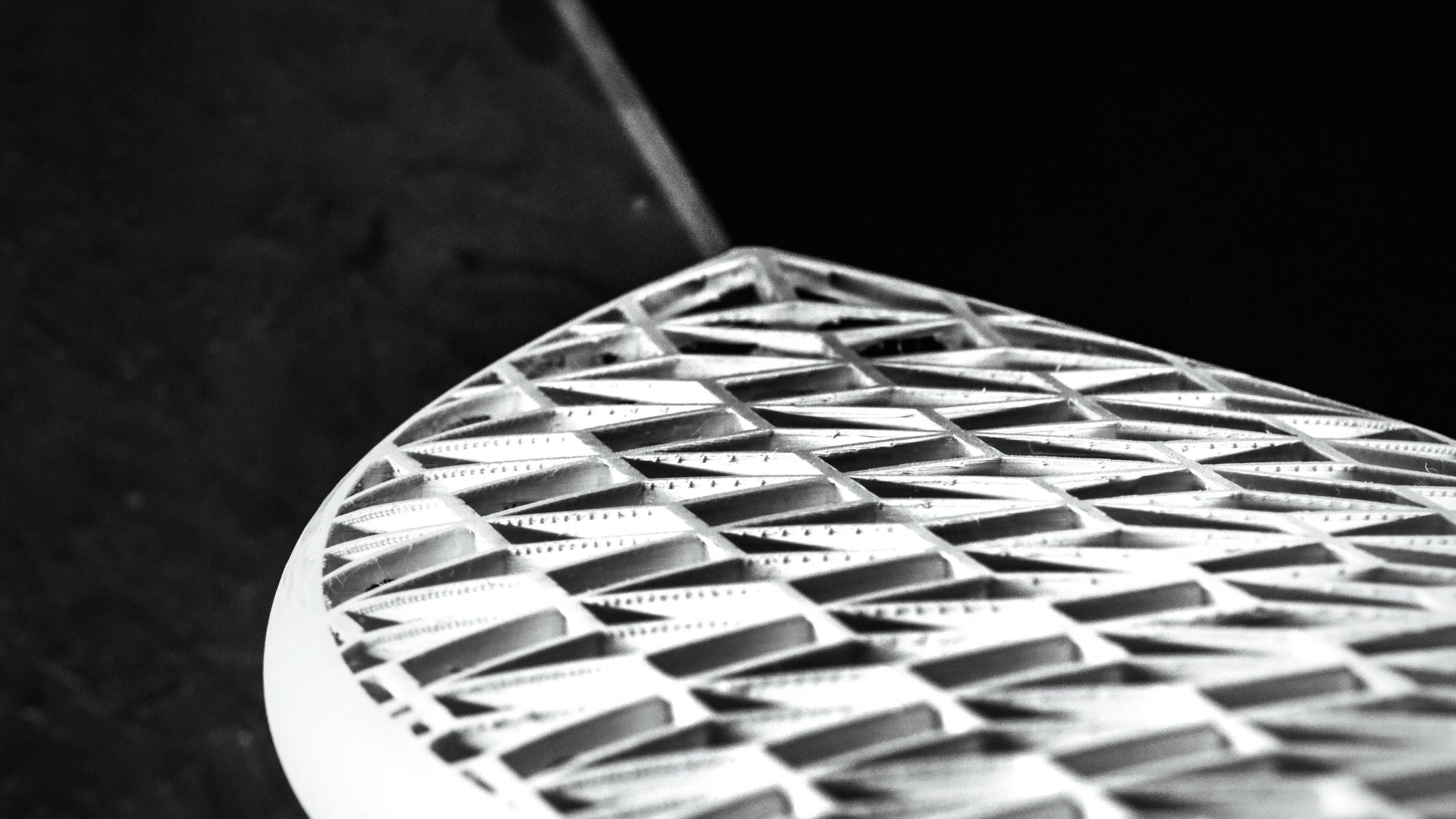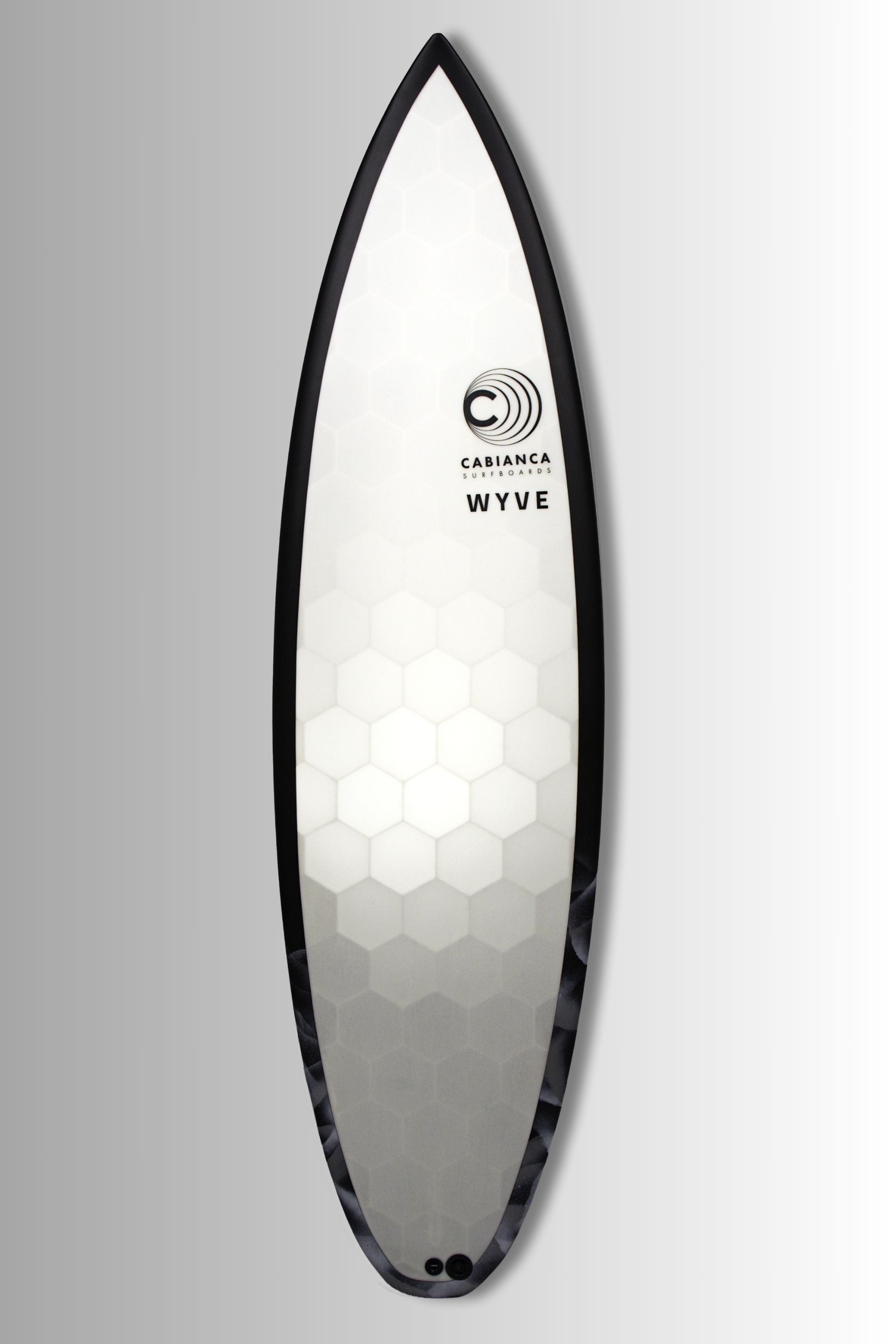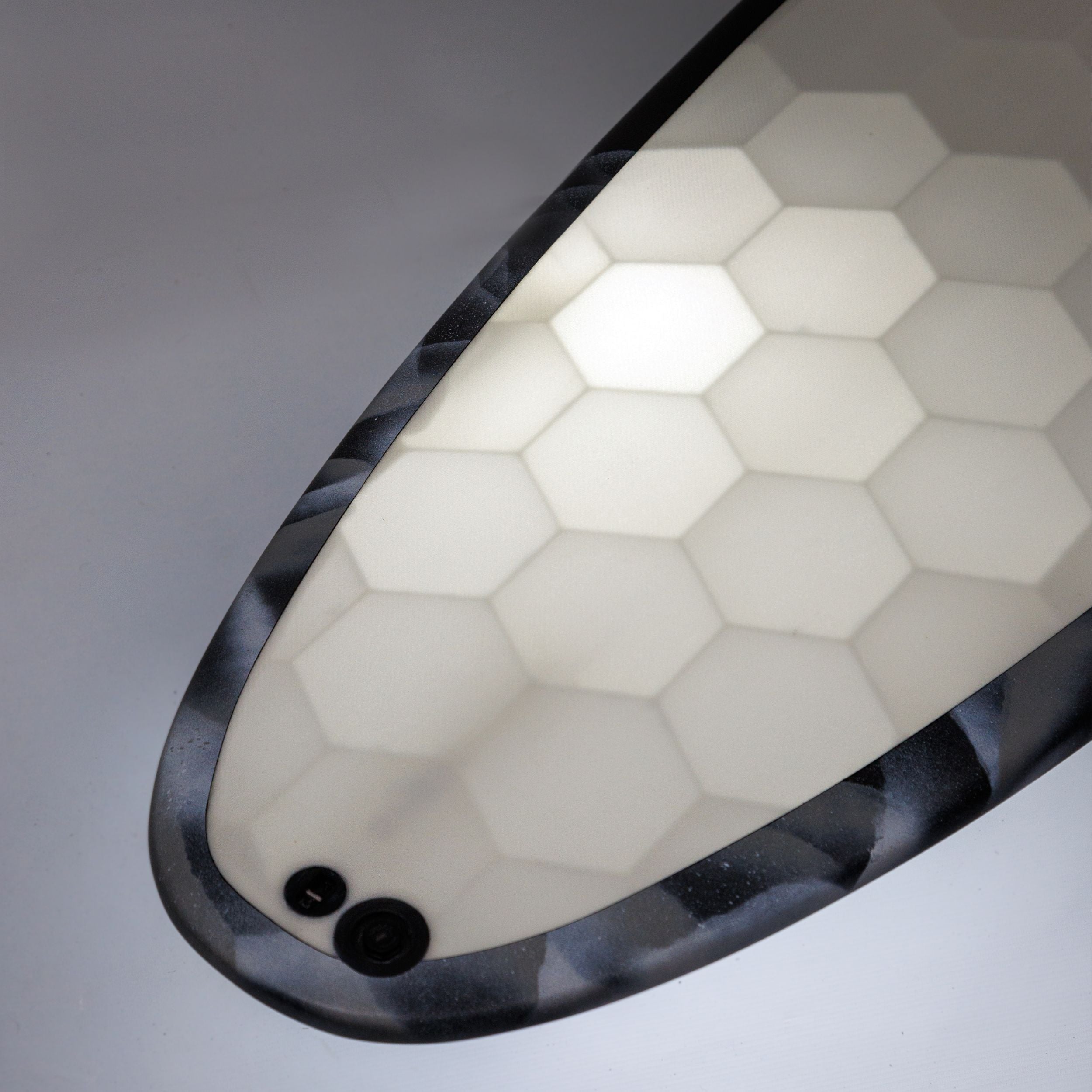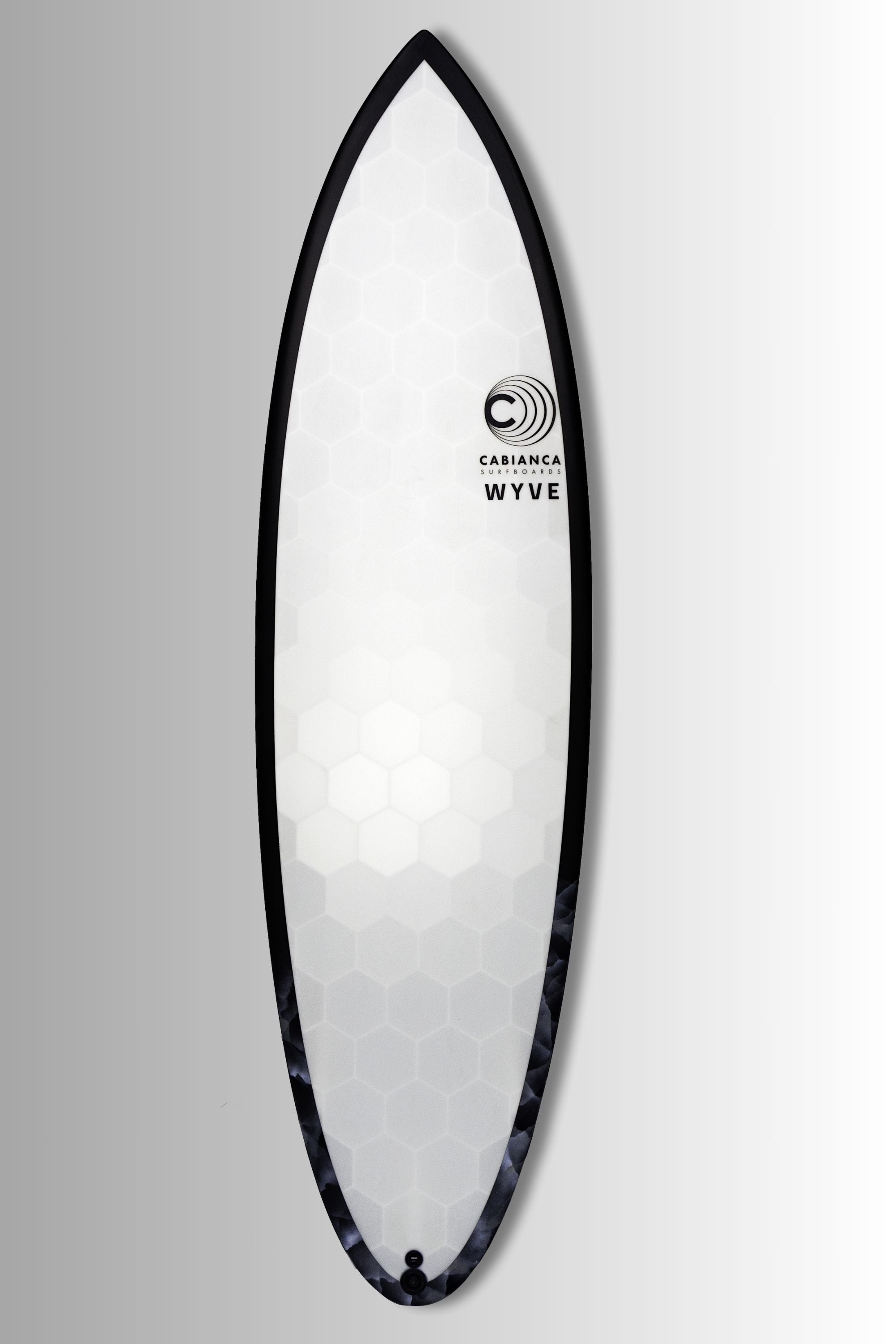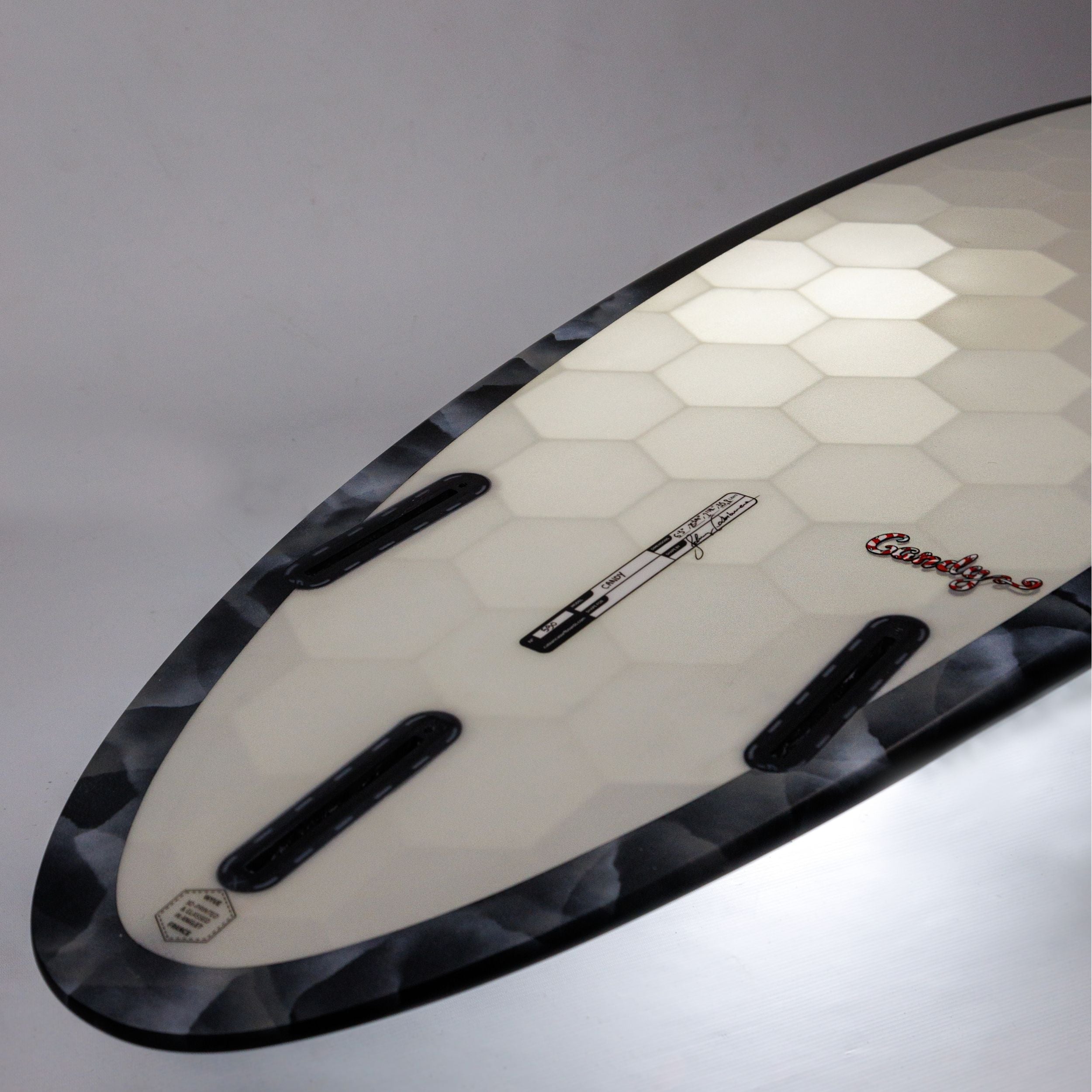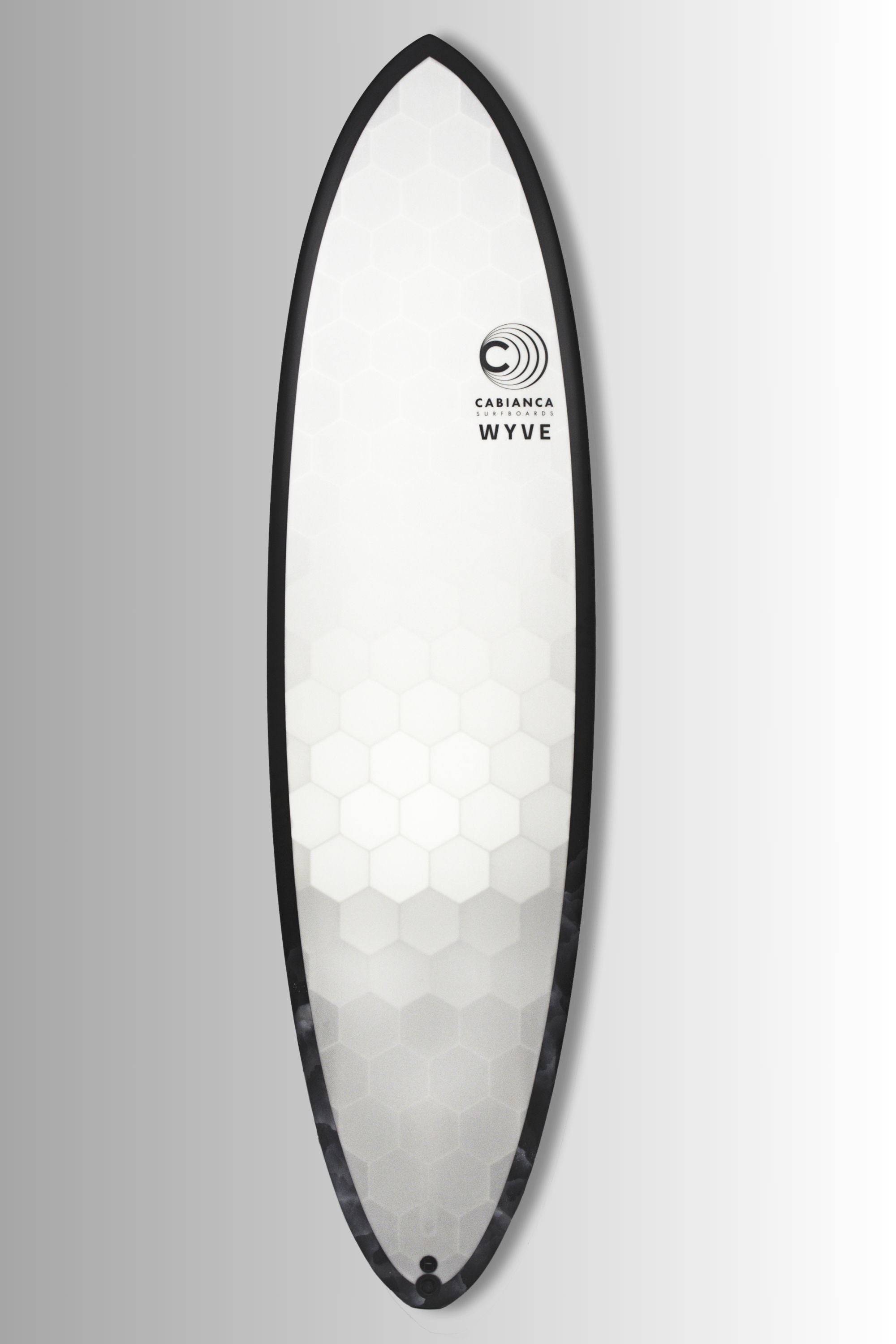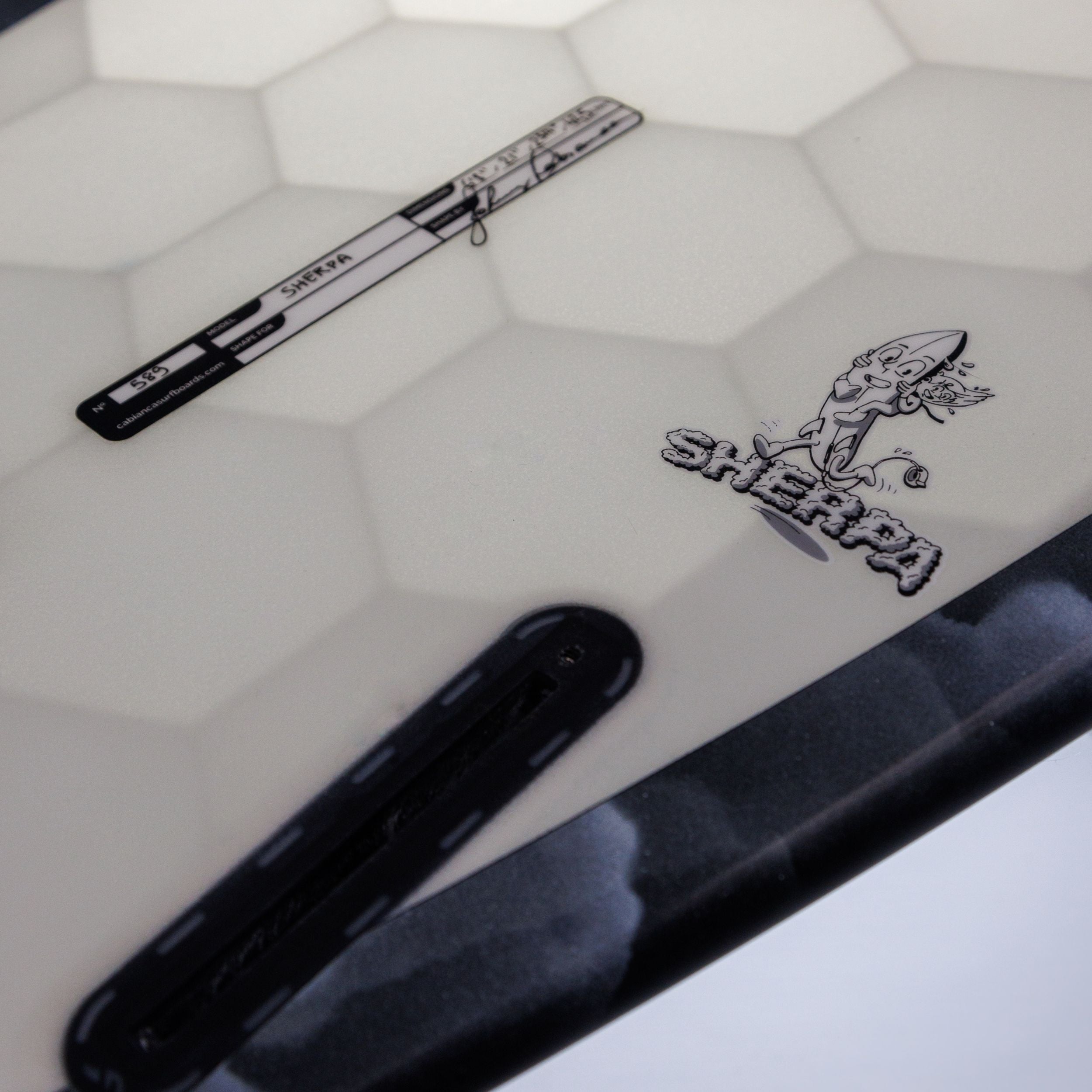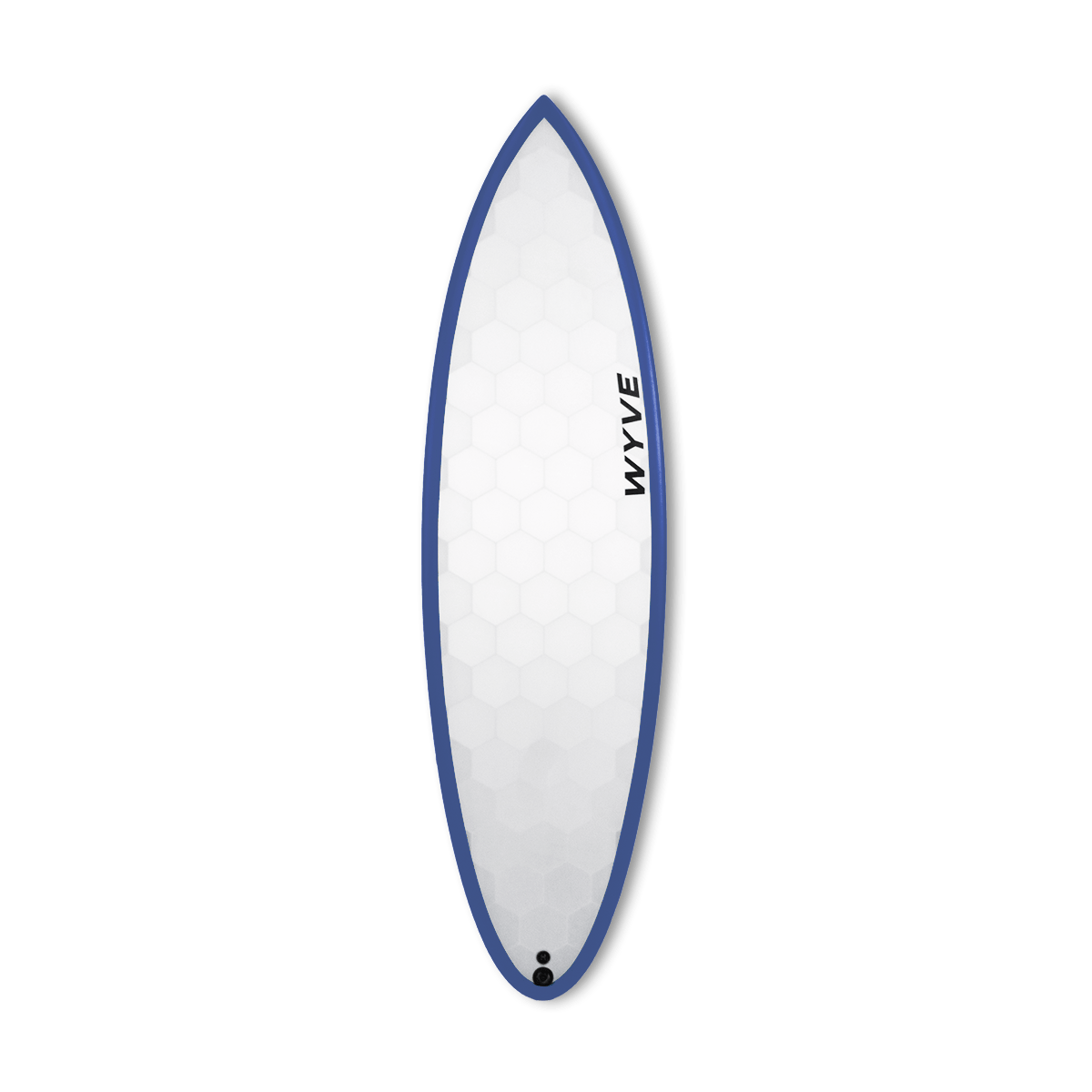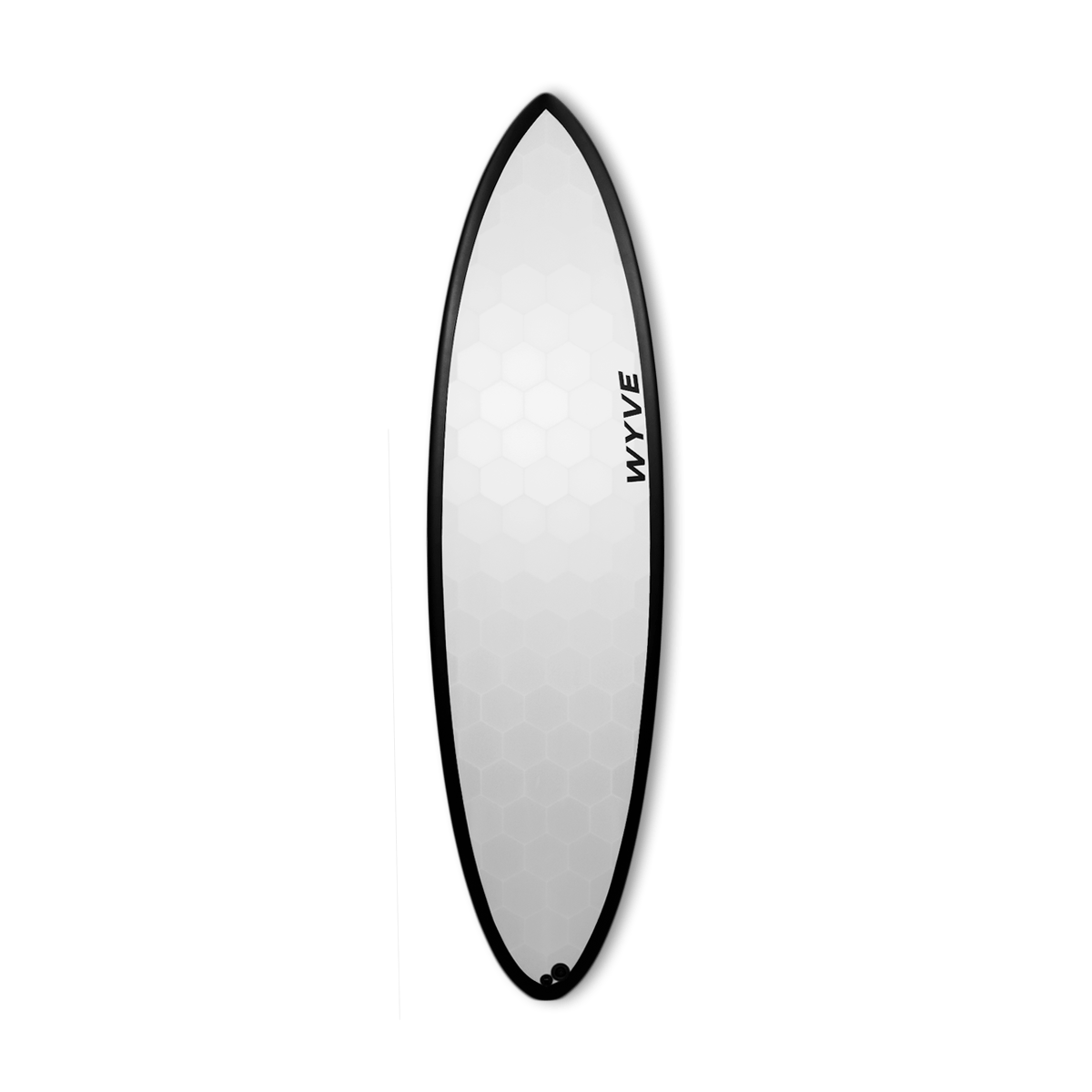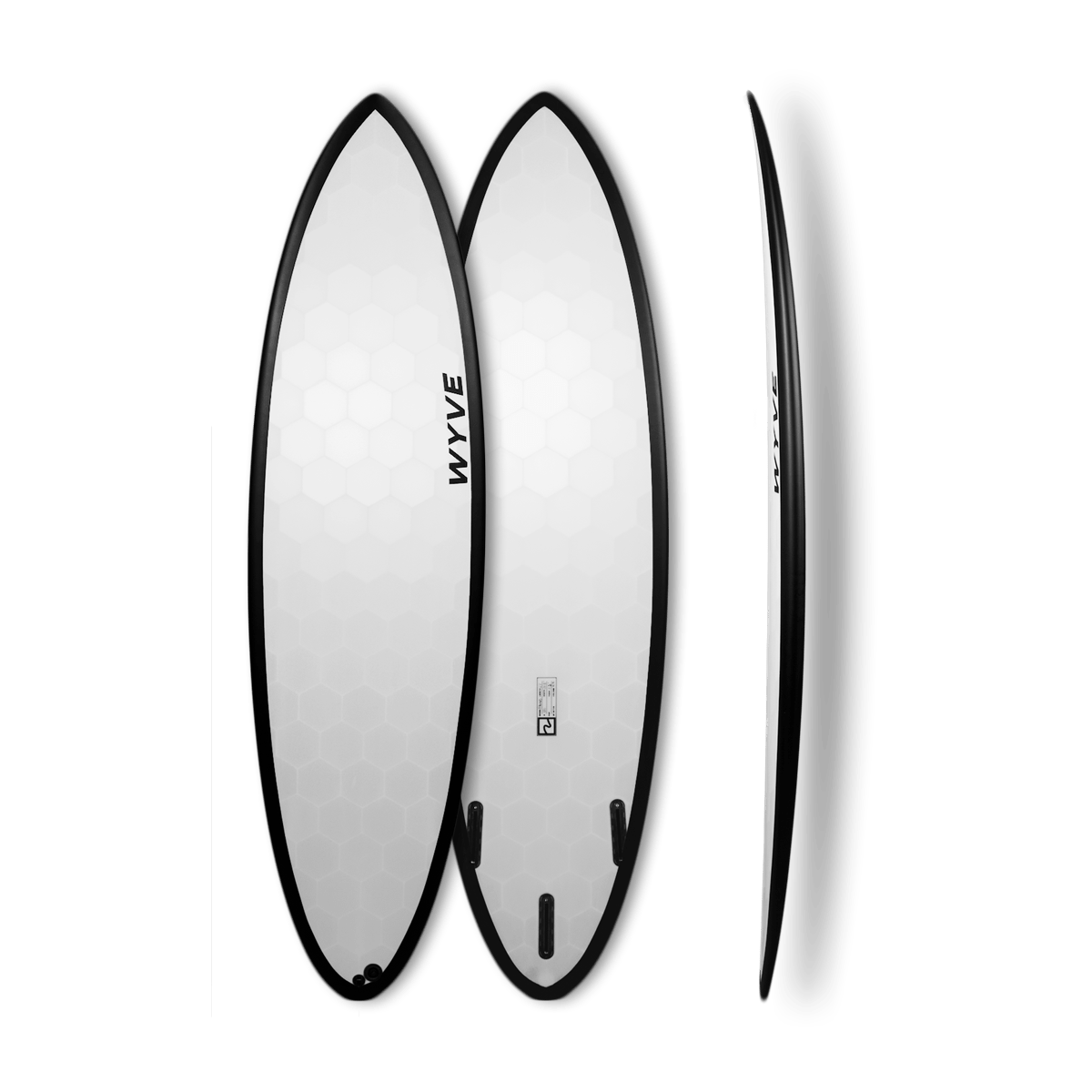Reading time 20 Minutes
Choosing a surfboard is a crucial step for any surfer, whether beginner or experienced. The board you ride can have a significant impact on your surfing experience, influencing how you ride waves and how your surfing skills progress. It's a personal choice that depends on several factors, including your surfing level , your riding style, and local wave conditions .
In this article, we'll delve into the complex art of choosing the perfect surfboard and the criteria to consider when building the ideal quiver . Whether you are a passionate beginner or an experienced surfer looking for new sensations, we have gathered a wealth of information to guide you in your choice of equipment.
To illustrate the importance of this choice, it is impossible not to mention Kelly Slater , one of surfing legends. His career perfectly illustrates how the surfboard can become an extension of oneself, an integral part of the magic of modern surfing. Kelly Slater has adapted her quiver over the years, carefully choosing each of her boards according to WSL events and spots. His expertise and influence on the world of surfing make him a source of inspiration for riders around the world.
So, whether you're looking for advice on choosing your very first board or want to refine your quiver , follow us on this journey.

The Fundamentals of Board Selection
Choosing your surfboard is much more than a simple shopping step for wave lovers. It's a crucial decision that profoundly influences your surfing experience and your progress in this exhilarating sport. In this section, we'll explore the fundamentals of choosing your surfboard, emphasizing the importance of each decision.
Choosing a surfboard is not a trivial process, because it must reflect your riding style, your surfing level and the local wave conditions. It is a decision that will allow you to flourish in this magnificent sport.
Choosing the wrong surfboard can have a significant impact on your progress .
Some of the criteria are decisive so to avoid making a mistake in your choice, you will need to understand the key parameters beyond the size of your board.

The Type of Shape: The Soul of Your Board
Choosing the right surfboard shape is a bit like choosing the right pair of shoes for a special occasion. Imagine that you have a pair of comfortable sneakers in your closet for walking around town, and a pair of lightweight running shoes for your morning jogs. Well, surfboards work the same way. The shape is THE essential criterion of your board.
The most common mistake is to only look at the size of a board without considering other factors such as volume , nose shape, rails. You must analyze all of these elements and not stop exclusively at the dimensions of your board (length, width and thickness).
One of the key elements of choosing a surfboard is the type of shape . The shape defines the shape of your board, which directly affects how it reacts in the water. Shapers (artisans who make boards) create a variety of shapes, each adapted to specific riding styles. These shapes can then be available in different constructions such as foam, also called softop, fiberglass, carbon and even linen.

Understanding Surfboard Types
The main families of Shape
Imagine the world of surfing as an all-you-can-eat buffet, but instead of delicious food, you have an endless variety of surfboard shapes to choose from. Each of these shapes looks like the secret ingredient in the perfect recipe for an incredible surf session . Choosing the shape of your surfboard is essential to obtaining the best riding experience. Here is an overview of the main types of shapes:
1. A Shortboard : A short and narrow board, reserved for experienced surfers. It provides exceptional maneuverability for hollow and fast waves. This is the board you see under the feet of pros like Kelly , easy to recognize with its very pointy nose.
👉🏻 Our selection of shortboards at Wyve 🏄🏻♂️
The size of a shortboard is between 5'0 and 6'6 (150 to 200 cm)
2. The Evolutive or Hybrid: A board more tolerant than the shortboard, suitable for intermediate surfers. It offers a good balance between radicality and stability . She often has a more rounded nose and more rounded shapes. Its ribs are more generous than a shortboard, with more width, length and thickness
👉🏻 Our selection of Hybrid boards 🏄🏻♂️
So-called Hybrid surfboards are often between 6'0 and 6'10
3. The Fish: Short and wide, perfect for small waves, but limited in big wave conditions. It is a perfect board for less powerful, so-called soft waves . The fish is easily recognized with a fish tail shape on the back of the board.
Fish are shorter, their dimensions are generally between 5'0 and 6'4 even if you sometimes see boards of larger sizes: 7'2 to 7'6.
👉🏻 Our selection of fish at Wyve 🏄🏻♂️

4. The Mini-Malibu and the Egg: This is the most popular type of board in the surfing world, also the most widespread. These surfboards guarantee you maximum stability, perfect for starting out and progressing quickly. These boards are less maneuverable than fish or shortboards thanks to their length. The Malibus minis are boards that are easy to paddle , this type of board allows you to surf small waves in safety and to familiarize yourself with the take off. This type of board is also called Mid Length
👉🏻 Our selection of Mini Malibu 🏄🏻♂️
5. The Longboard: A long board, heavy and elegant, perfect for gliding smoothly and catching waves early. Rather intended for experienced surfers. With a longboard you don't have the ability to do ducks. Longboard shapes are in turn broken down into subfamilies such as nose riders or performance longboards.
6. The Gun: Reserved for expert surfers, it allows you to challenge giant waves.
The choice of shape will depend on your level, your riding preferences and the types of waves you plan to surf. Be sure to consider these factors to find the perfect board for you.
There are also foam surfboards prevalent in the surf market. They are also called softop. The deck of this type of board is entirely covered in foam. This type of board offers safety and ease. They are most often available in Mini Malibu type shapes.
They are perfect for discovering the practice of surfing. If you have taken a surf course, it is very likely that the first surfboard you used was a foam board. Their construction provides simultaneously solid and accessible returns.

Physical Fitness: The Plank as an Extension of Self
Your physical fitness is a determining factor in choosing your surfboard. A board that is poorly suited to your weight and skill level can compromise your progress.
For example, a board that is too small for a beginner surfer can make learning difficult, while a board that is too large for an experienced surfer can limit their performance.
Finding a balance between the board and the surfer's fitness is essential to get the best sensations and get the most out of each surf session. In summary, choosing a surfboard is a complex decision that depends on several factors, including the type of shape, physical fitness and riding style.
This step is essential for your progression as a surfer , as it directly influences your experience on the waves.
Here are some tips from the pros to find the volume of your board based on your weight and your surfing level.

The Importance of Wave Type
One of the essential keys to choosing the perfect surfboard is understanding the type of wave you plan to ride . Wave type greatly influences the performance of your board, and choosing the right match can make all the difference.
Wave Type Influences Everything
The waves are as diverse as the surfers who ride them. They vary in size , shape and power , creating a multitude of surfing scenarios . This is why it is crucial to consider the type of wave you will encounter on a regular basis.
For example, if you primarily surf beach break waves , which are often fast and short, a short, maneuverable board may be ideal for performing quick maneuvers. On the other hand, if you have access to long rolling waves , a longer board with better lift can maximize your enjoyment.
Adapt Your Quiver to Local Waves
For surfers who are lucky enough to live near the ocean, it is important to adapt your quiver (set of boards) to the local waves. Find out about the characteristics of the surf spots in your area, particularly the size and shape of the waves that predominate there.
Typically, a well-balanced quiver will include different boards to suit a variety of conditions. This might include a board for small summer waves like a fish or a twin, one for hollow winter waves, and maybe even a board for trips to exotic surf destinations.

How many Boards in a quiver?
The question of how many boards you need in your quiver is a delicate and personal question. Some avid surfers accumulate multiple boards for every eventuality, while others prefer to stick with one all-purpose board.
Typically, a regular surfer will have 3 to 4 boards in their quiver.
Here is an example of a 3 board quiver for a good level surfer:
- A Wyve Leaf-style performance shortboard 🌊 🌊 🌊 🌊
- A hybrid board that goes everywhere like Wyve Drop 🌊 🌊 🌊
- A twin for softer summer waves 🌊 🌊
- A Mini Malibu with volume for small conditions 🌊
Ultimately, the number of boards in your quiver will depend on your skill level, budget, and commitment to surfing. There's no universal answer, but it's important to keep in mind that your board choice should match the type of wave you plan to tackle. Last and not insignificant point, the size of your garage stored 10 or 30 surfboards is absolutely not the same!
In conclusion, wave type is an essential factor in choosing the surfboard that suits you best. By considering the type of wave you will face and tailoring your quiver accordingly, you can maximize your enjoyment and performance on local waves. In the following sections, we'll cover other aspects of board selection, including size and weight. 🌊🏄♂️

The Role of Fitness
In addition to the type of wave and the shape of the board, the physical fitness of the surfer is a determining factor in choosing the ideal board. Your fitness level, along with your height and weight, influences how you interact with the board and the waves. Here's why it's essential to consider your fitness when choosing your surfboard.
If you have excellent cardio and strength in your paddle, then in this case you can take a board with a little volume weight. Conversely, if you are not at the top physical level, a slightly longer board, with more volume, will compensate.
Finally, remember to consider the density of surfers at the peak , if your spot is “ armoured ” then having a slightly longer board will allow you to slide onto the peak more easily and catch more waves.
Weight and size
When choosing a surfboard, it is crucial to estimate your height and weight. These two factors have a direct impact on the buoyancy, stability and maneuverability of the board.
-
Weight : Your weight affects the buoyancy of the board. A heavier surfer will need a board with more volume to provide adequate buoyancy. A board with insufficient volume for your weight risks diving into the water and making paddling difficult.
- With a higher center of gravity, taller riders can opt for longer and/or bulkier boards.
Listen to Your Body
Listening to your body is essential when choosing your board. If you feel comfortable with a particular board and can handle it effectively, this can compensate for some size or weight limitations.
Ultimately, the choice of board should match your current fitness and progression goals. There is no magic formula, but by considering these factors you will be able to narrow down your choices and maximize your surfing experience.

The Quest for Ideal Literacy
Understanding Surfboard Literacy
Surfboard rating is an essential term to know when it comes to choosing the perfect board. In simple terms, literage represents the total volume of the board, measured in liters. This number is a key indicator of the board's buoyancy and its ability to support the surfer's weight.
Link between Literage, Volume and Buoyancy
Literacy is directly related to the volume of the board, and volume is one of the most important factors in determining how well a board will float in water. The higher the liter, the more buoyant the board will be, which makes it easier to paddle and take-off. A higher liter is therefore ideal for beginners or for surfers looking for a stable board.
On the other hand, a board with a lower literature will be thinner and lighter, making it more responsive and suitable for more aggressive surfing and radical maneuvers. Experienced surfers often prefer boards with a lower liter to gain maneuverability.

Literacy According to Your Level
The choice of coverage will therefore depend on your level of surfing, your physical form and your objectives. Beginner surfers generally gain confidence and ease of paddling by opting for a board with a higher rating. For more advanced surfers, finding a balance between volume and maneuverability is essential to optimize performance.

Consider All Elements of Shape
It is essential to remember that the choice of board does not just come down to the size. Although the bedding is a key factor, it is important to consider other elements of the shape, such as width , rocker , hull , rails , and many others such as fin configurations. Each element of the shape contributes to the way the board reacts in the water, and all of these characteristics must be balanced to match your surfing style.
It's also crucial to note that many surf brands don't communicate the weight of their boards , which can be a shame for surfers looking for a light or heavier board depending on their preferences.
Don't just let yourself be guided by the trend of the literature; pay careful attention to all elements of the shape to find the board that best suits your style and needs.

Building a Kelly Slater-style Quiver
Understanding the Essence of a Surf Quiver
A surf quiver is the set of surfboards that a surfer owns. Each board in this quiver has a specific role, suited to different wave conditions and surfing situations. Building a well-balanced quiver is essential for avid surfers, as it allows them to get the most out of every session, regardless of the conditions.
Each of these boards is like a piece of a puzzle, specially designed to suit particular surfing scenarios. The art of building a well-balanced quiver is not just about accumulating boards, but about deeply understanding each role they play in your experience on the water.
Imagine a surf session where the waves are small and gentle, like a soothing lullaby. In this scenario, your stable and smooth longboard comes into play, allowing you to glide gracefully and ride waves smoothly. It's like having a pair of comfortable shoes for a long walk. You can also get for a fish
However, surfing is unpredictable, and the next day the waves can turn into powerful whirlwinds of energy. This is where your shortboard comes in, agile and responsive like a high-level athlete. You rely on it to perform daring maneuvers and surf the trickiest waves. It's a bit like going from a family car to a racing car for a demanding rally.
Then there are those days when the waves are somewhere between gentle and powerful. Your evolving board, a perfect compromise between stability and maneuverability, becomes your surfing partner. It's like having the versatility of a Swiss army knife to face varied challenges.
Building a balanced quiver requires a thorough understanding of local conditions , your own skill level , and your preferred surfing style. It also requires constant adaptation, because wave conditions change from one day to the next, and your surfing progress can lead you to explore new horizons.
The essence of a well-balanced quiver is to give you the opportunity to fully experience each surf session , whatever card the ocean deals you. It's an investment in your enjoyment and performance.
So, next time you're choosing which board to take with you, remember the importance of putting together a quiver that lets you tame the seas with style and ease.
Kelly Slater: The Quiver Expert
Professional surfers are known for having surfboard quivers suitable for different surfing situations and various wave types. This strategic approach allows them to shine in all conditions and maximize their performance. A well-balanced quiver is essential for any avid surfer, as it ensures an optimal experience in the water, regardless of location or conditions.
Imagine a professional surfer preparing for a competition on a beach known for its powerful, hollow waves. In this case, his quiver would consist mainly of shortboards specially designed for beach breaks. Each of these boards would be adjusted to suit the conditions, with features such as a pronounced rocker and a narrow tail, allowing for quick and radical maneuvers.
However, if this surfer is going to an area where the waves are known to be huge, like Jaws in Maui , then his quiver would be guns. These extra-long, narrow boards are designed to tackle giant waves with confidence. They offer the stability necessary for surfing in the most extreme conditions.
The key for professional surfers is to tailor their quiver based on the specific surf spot and wave forecast.
Whether you're a professional or amateur surfer, the lesson is that diversity in your quiver can be the key to your success. By tailoring your boards to specific conditions and spots, you can improve your surfing experience and maximize your enjoyment in the water.

Pro Tips
If you want to build a quiver worthy of Kelly Slater , here are some tips from the master himself:
- Variety of Sizes : Make sure you have boards in different sizes to cover a wide range of conditions. Shorter boards for hollow, fast waves, and longer boards for small, soft waves.
- Variety of Shapes : Opt for a variety of board shapes, like shortboards, fishes, guns, and longboards. Each shape has its advantages in specific conditions.
- Solid Construction : Invest in quality boards, with solid construction to ensure durability. Kelly's boards are renowned for their strength, which allows them to withstand the most extreme conditions.
- Adaptability : Be prepared to change boards depending on conditions. Kelly Slater is known for his ability to adapt quickly and choose the perfect board for each wave.
- Constant Learning : Like Kelly, always be on the lookout for learning. Try new boards and shapes to expand your surfing skills.
Conclusion: Finding Your Perfect Surfboard
In conclusion, choosing the right surfboard is a crucial step for any surfer, whether beginner or expert. Every aspect, from the type of wave to the fitness of the surfer, must be considered to ensure an optimal surfing experience.
It's essential to remember that board choice isn't just about following a trend or emulating pros like Kelly Slater or John Florence . Every surfer is unique, like the waves they will face. By keeping this in mind and considering all the factors, you will be able to choose a board that perfectly suits your style and needs.
Consider sharing your own board-choosing experiences with the surfing community. Everyone has their own story to tell and their own advice to give. The world of surfing is vast and ever-changing, and no single answer exists to the question of how to choose your surfboard.
We hope that this article has provided you with valuable information to guide your board choice and that you will soon be ready to hit the water with confidence. May every surf session be an unforgettable adventure! 🌊🏄♂️
Find 5 good reasons to choose a Wyve surfboard

FAQs
How to Choose the Right Surfboard Size?
-
1. The importance of the right size : Choosing the right size surfboard is essential for your surfing experience. This affects your buoyancy, ease of paddling, and your ability to maneuver on the water.
-
2. Determine the ideal size : To find the ideal size, consider your weight and skill level. Beginners generally benefit from larger boards, while experienced surfers opt for shorter boards.
-
3. Pros and Cons : Shorter boards offer increased maneuverability, ideal for radical maneuvers. Longer boards provide stability and ease of paddling.
-
4. Impact on surfing ability : Board size affects your ability to catch waves and maneuver. A suitable board will allow you to maximize your experience.
-
5. Exceptions to the rule : Some waves may require adjustments. For example, shallower waves may require shorter boards for quick maneuvers.
What are Important Considerations for the Ideal Quiver?
-
1. The role of the quiver : A quiver in surfing consists of different boards to suit various conditions. It is essential to maximize your experience.
-
2. Choose a versatile quiver : Select boards suited to different conditions, from small to large waves, for optimal versatility.
-
3. Board Differences : Understand the differences between boards for different sized waves, including maneuverability and buoyancy.
-
4. Adaptation to style : Customize your quiver according to your riding style and preferences for optimal performance.
-
5. Number of boards : The number of boards in your quiver depends on your level and your desire to surf in different conditions.
What Types of Board Shapes Suit Your Style?
-
1. Influence of shape : The shape of the surfboard influences your overall experience. It determines handling, stability and performance.
-
2. Different shapes : Shapes such as fish, shortboard and longboard behave differently on the water, choose according to your preferences.
-
3. Key Features : Consider things like width, rocker, concave and rails when choosing a shape.
-
4. Impact on maneuvering : Each shape affects your ability to turn and glide on waves, choose accordingly.
-
5. Shape versatility : Some shapes are suitable for different levels of surfers, so make sure you find the one that suits you best.



